I bought two games at retail that were published by Rio Grande Games over the summer: Dice Realms, and Space Station Phoenix.
Dice Realms ended up as one of the low points for my 2022 campaign—high expectations, even higher price point, and massive disappointment.
Then I moved to Space Station Phoenix. I am so delighted to share that I have really enjoyed playing this game. Space Station Phoenix doesn’t do anything novel: it’s got scoring majorities, tracks upon tracks, “aliens” that look a heck of a lot like brown cubes that need to be “transported” into “living quarters”, dice-based resource collection, and engines that all scream Eurogame efficiency puzzle.
But Space Station Phoenix only needed to do one thing right: be fun. It delivers on this promise thanks to a host of factors.

Eurogame in Reverse
The best thing about Space Station Phoenix is that your “engine”—the bit Eurogamers seem to enjoy talking about most—is already in full gear when the game begins. The trick is that your tough decisions come from when to slowly begin breaking that engine down.
Space Station Phoenix tasks players with destroying their fleet of ships to build a new space station that can be inhabited by a mix of four alien types (cubes of different colors, one of which represents a wild category) and their human counterparts.
Each player begins play with at least nine ships, which represent the actions that can be taken by any player by spending GEMs (cash) to do things like gather resources or take those resources and turn them into aliens, useful for filling up your station and scoring end-game points.
Each of those ships is worth a certain amount of metal, and you’ll need metal to build a nine-section space station where everyone (and everything!) needs to live. When will you start taking the Dismantle action to take spots away from your engine?
Ahh, the puzzle is juicy. In most games, you’ll spend your turns building up your engine, getting better things to do all game long. It might even confuse Euro veterans when they see their initial tableau and realize they have a basic action as well as 2-3 cards that have actions that can be used right away!
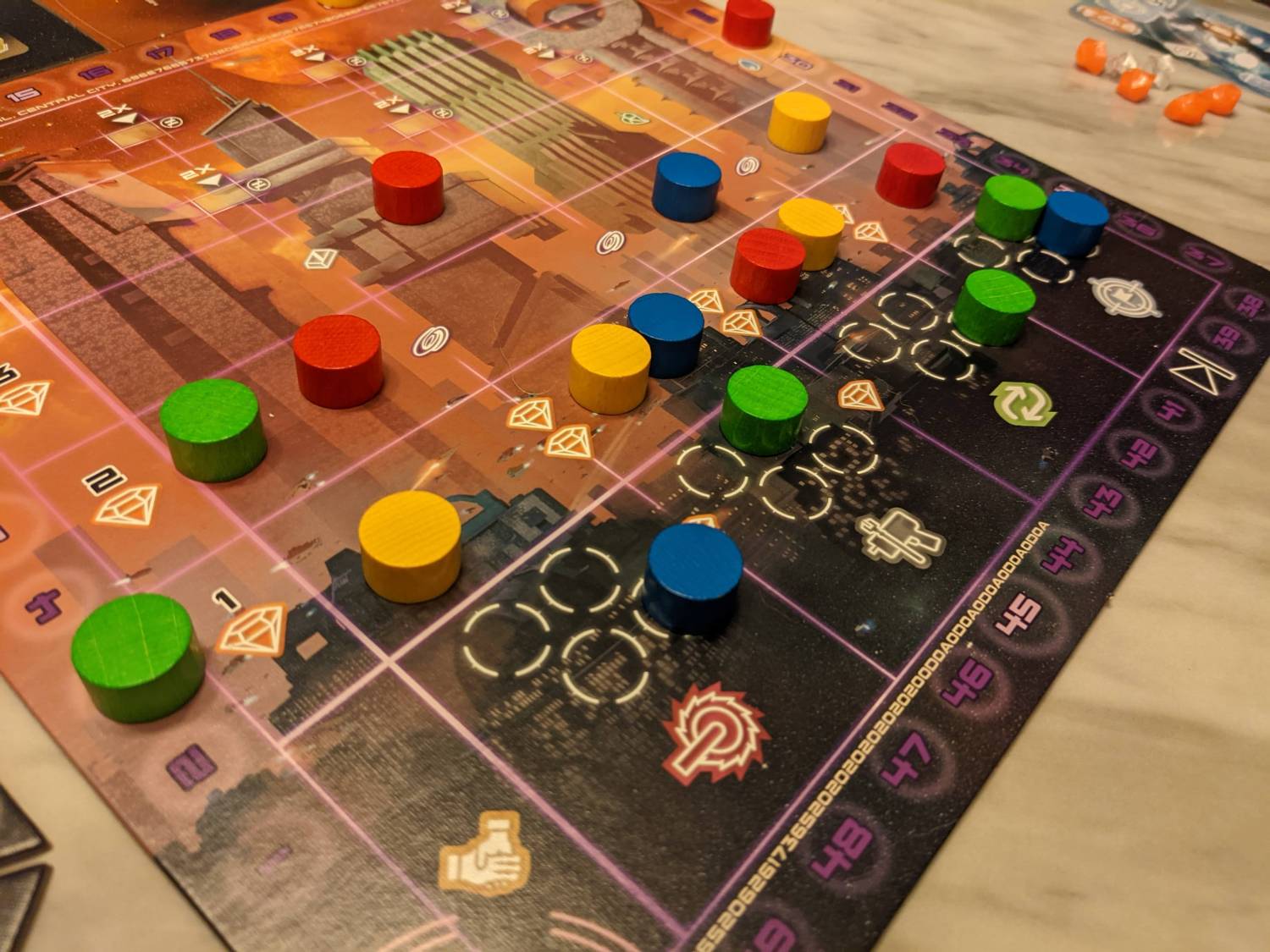
Pace
This also means that Space Station Phoenix may have a slow burn to start, as players cautiously consider which ships to get rid of while building up resources to do each action.
The game claims to take about 30 minutes per player, and that has come to fruition in my plays. But turns are usually quick, and the game borrows from other games to ensure that all players are engaged in every player’s turn using the Diplomacy board.
On the Diplomacy board, four of the game’s five main actions are listed as tracks. Everyone starts on the zero space of each track, but as they move up, they become eligible to receive rewards every time any player takes one of these four actions. The leader gets more than the others, but as long as you even bother moving up each track, you’ll get at least one GEM almost every turn.
The drip is real. That also means you have a little more to manage than I would like in a game—someone will constantly be calling out their action to ensure players take their piece of the pie. But this means that while you are considering your next move, you may also get things just for being at the table.
Another way to interact with players: using their ships to take actions. Every ship on the board is public. Want to construct a new part of your station even if your construction ship is blocked? No problem. You’ll have to pay your neighbor a few GEMs to cover the rental costs, but then you can use the action as normal.
This means that the game’s mixed economy allows for players to stretch out their turns between being forced to take the Income action. Income means using a turn where you do nothing but gather more GEMs as well as any extras that come from the light player powers your Station Hub provides you.
(A note about variety: there are TWENTY-FOUR Hub tiles in the box, each with different starting resources and player powers that can trigger throughout play. Half of those are “basic” powers, and half are advanced powers for those seeking a bigger challenge. I love that there is this much variation in the base game!)
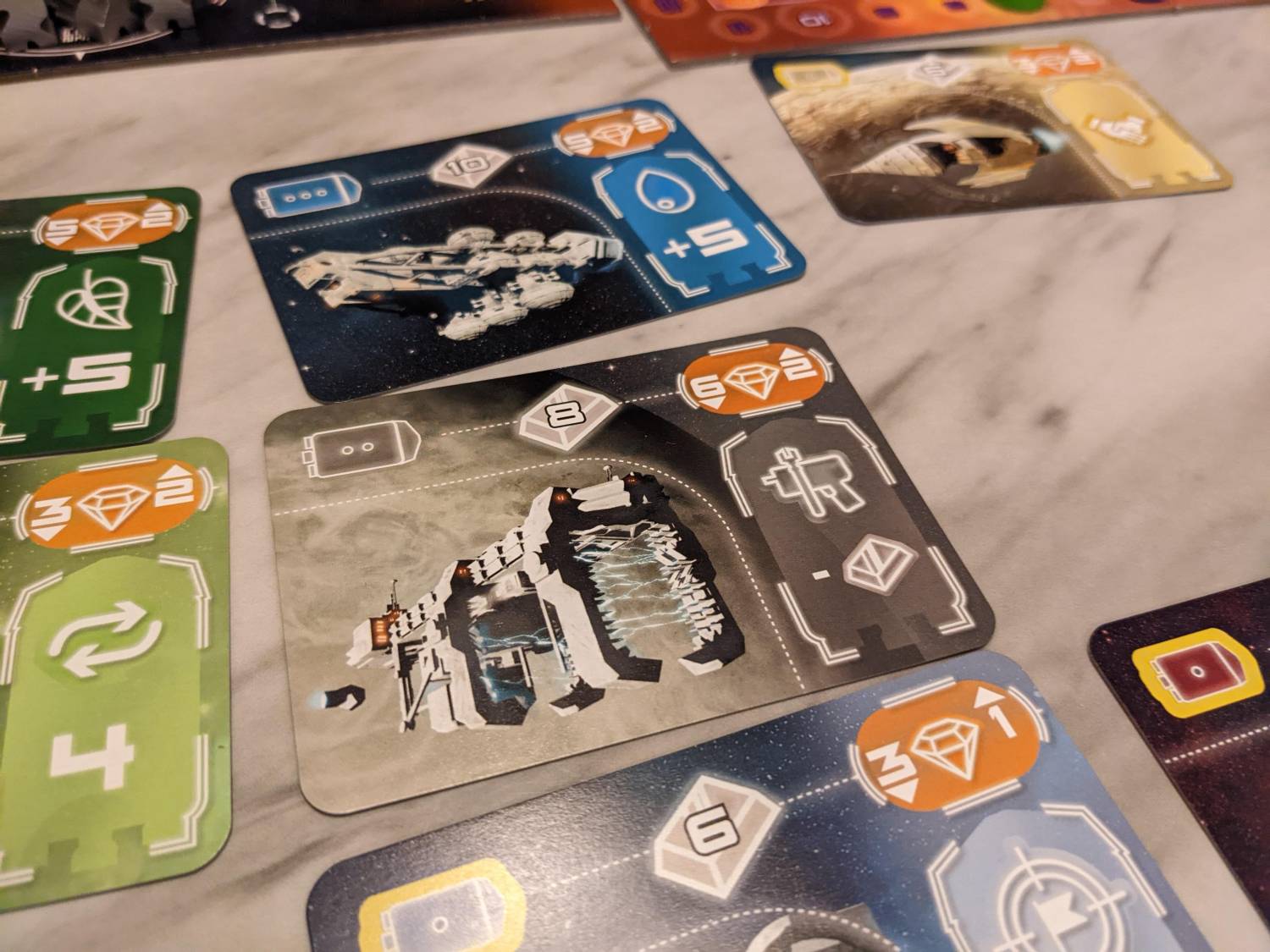
Production
Much like Beyond the Sun, I appreciate that Rio Grande focused more on a great rulebook, easy-to-read iconography, loads of cubes, stellar-if-wordy player aids, and lots of large boards.
You will not confuse Space Station Phoenix for an Eagle-Gryphon Games production like Vinhos Deluxe Edition with top-notch art, solo play, and anything resembling extras. The price of Space Station Phoenix feels right; about $75 gets you a solid game with a massive but pedestrian table presence, with loads of variety in the box and no need for expansion content right away.
Space Station Phoenix is a table hog, especially at four players. So take my advice and don’t play it at four players; the game doesn’t add anything with more or less players, similar to something like Ark Nova.
I have played Space Station Phoenix at three players and at four players; three players is the most you’ll want to have at the table at once. Downtime is lower, it’s easier to see—and reach—each of the other player’s ships when you want to take their actions, and keeping track of the leaders in each column of the Diplomacy board is easier.
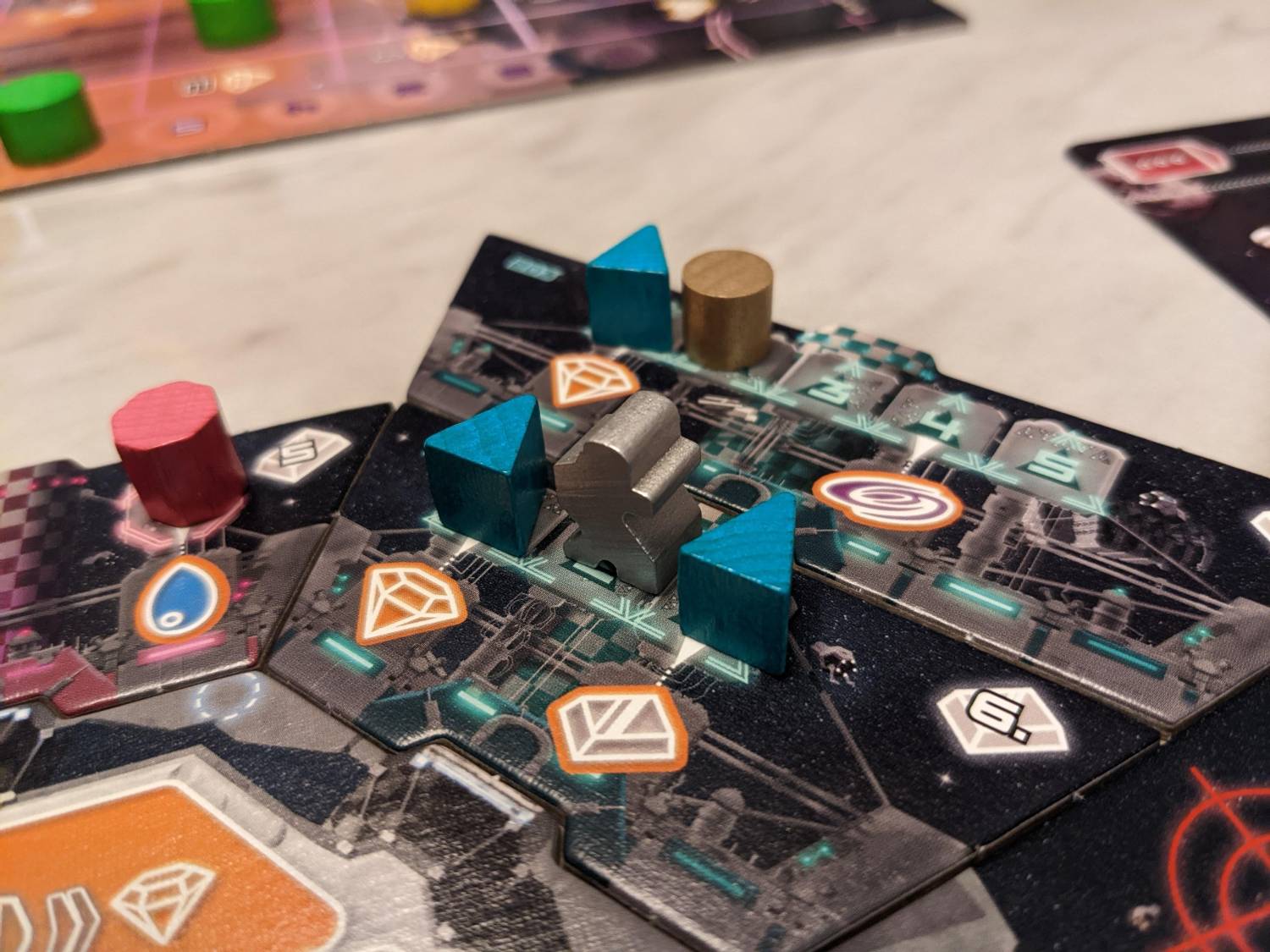
Go to Phoenix (in Space)
I really enjoy Space Station Phoenix. I talk often about having games in my collection that truly differ, and the game’s approach to engine building in reverse adds enough of a wrinkle to make it a keeper.
I know I have enough variety in the box to keep me busy for a while, and I like how straightforward the game is to teach, making it easy to get to the table. (I was first worried that it would take a while to set the game up, but that has consistently been a 15-minute exercise, so setup is not a barrier to entry.)
There’s a bit too much to track from turn to turn, and in each of my games, I’ve had a power thanks to a sector of my station or maybe a starting power that I forgot to use on my turn. That’s on me to remember, but there’s just enough minutiae to keep up on that you can expect to curse the sky because you forgot to take that small bonus a few turns ago.
At two players, Space Station Phoenix is a one-hour game, and that is probably the sweet spot. I could imagine three experienced players getting this done in about the same time if they are making quick decisions.
Mid-weight Euro lovers, rejoice!


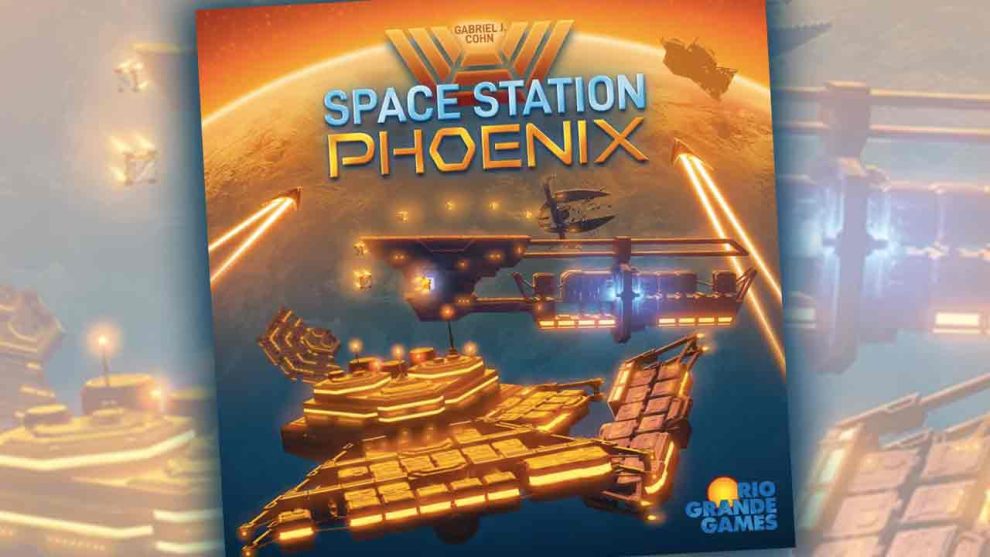

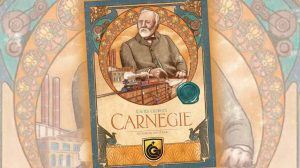







Add Comment